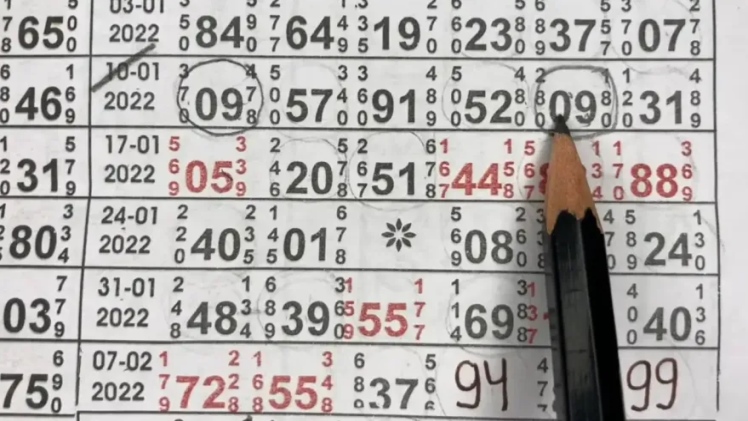Unlock the mysteries of Fix Fix Fix Satta Nambar 100 with our comprehensive guide, delving into its origins, mechanics, legal landscape, and socioeconomic impacts. Learn how to navigate the risks associated with this form of gambling and discover practical measures to promote responsible participation. Dive into the complexities of Satta and gain insights into fostering a more equitable and sustainable society.
Introduction to Fix Fix Fix Satta Nambar 100
In the realm of gambling and speculative activities, Fix Fix Fix Satta Nambar 100 stands as a prominent yet controversial phenomenon. Originating from the Indian subcontinent, particularly prevalent in regions like Mumbai, this game has garnered both fervent followers and vehement critics. Fix Fix Fix Satta Nambar 100, often referred to simply as Satta, has captivated the attention of individuals seeking quick fortunes. However, behind its allure lie layers of complexity and risk that demand thorough exploration.
Understanding the Dynamics of Fix Fix Fix Satta Nambar 100
At its core, Fix Fix Fix Satta Nambar 100 revolves around the prediction of numerical outcomes in various forms. Participants, commonly known as players, wager money on specific numbers, often influenced by intuition, analysis, or insider information. The term “Fix Fix Fix” underscores the notion of certainty or assurance associated with certain numbers, although the reality may be far from such guarantees. The allure of Fix Fix Fix Satta Nambar 100 lies in its potential for substantial returns within a short span, but this allure is tempered by the inherent unpredictability and legal ramifications.
200+ Best Gambling Business Name Ideas & Generator
The Historical Evolution of Fix Fix Fix Satta Nambar 100
Fix Fix Fix Satta Nambar 100 traces its roots to the early 20th century, emerging as a localized form of gambling primarily centered in urban areas of India. Over time, its popularity soared, driven by a combination of economic disparities, societal influences, and the human penchant for risk-taking. The game evolved from rudimentary forms of street-side betting to a sophisticated network encompassing digital platforms, enabling widespread participation and facilitating intricate transactions. Despite facing periodic crackdowns by law enforcement agencies, Fix Fix Fix Satta Nambar 100 has demonstrated resilience, adapting to changing circumstances and maintaining its presence in the underground economy.
The Mechanics of Fix Fix Fix Satta Nambar 100
Fix Fix Fix Satta Nambar 100 operates within a structured framework governed by rules, albeit informal and decentralized. Central to its functioning are individuals known as bookies, who serve as intermediaries facilitating bets between players and syndicates. These bookies maintain an intricate network of contacts, disseminating information, odds, and outcomes to participants. The game encompasses various formats, including single, Jodi, Panna, and others, each with its own set of rules and payout structures. Despite lacking official oversight, Fix Fix Fix Satta Nambar 100 adheres to a code of conduct dictated by tradition and mutual agreements among stakeholders.
251+ Best & Catchy Gambling Slogans
The Socioeconomic Impact of Fix Fix Fix Satta Nambar 100
The pervasive influence of Fix Fix Fix Satta Nambar 100 extends beyond its immediate participants, exerting significant socioeconomic ramifications on the communities it inhabits. Critics argue that the game fosters a culture of dependency and addiction, exacerbating financial instability and widening the wealth gap. Moreover, its clandestine nature fosters corruption and illicit activities, undermining the fabric of law and order. Conversely, proponents contend that Fix Fix Fix Satta Nambar 100 serves as a livelihood for marginalized individuals, offering employment opportunities and a means of survival in adverse conditions. However, the net impact remains a subject of contentious debate, reflecting the nuanced interplay of economic, cultural, and ethical considerations.
The Legal Landscape Surrounding Fix Fix Fix Satta Nambar 100
Fix Fix Fix Satta Nambar 100 operates within a legal grey area, occupying a precarious position between acceptance and prohibition. While gambling laws in India generally outlaw games of chance, the enforcement of such statutes varies significantly across jurisdictions. In some states, authorities adopt a lenient approach, viewing Satta as a relatively minor offence compared to more serious crimes. Conversely, other regions enact stringent measures to curb its proliferation, conducting raids and prosecutions targeting operators and participants. The legal ambiguity surrounding Fix Fix Fix Satta Nambar 100 underscores the challenges in addressing complex social phenomena within the confines of legislative frameworks designed for conventional activities.
Mitigating Risks Associated with Fix Fix Fix Satta Nambar 100
Given the inherent risks associated with Fix Fix Fix Satta Nambar 100, mitigating measures are essential to safeguard the interests of stakeholders and minimize adverse outcomes. Education and awareness campaigns play a crucial role in informing the public about the dangers of excessive gambling and the deceptive allure of guaranteed winnings. Additionally, regulatory interventions focusing on harm reduction and consumer protection can help curb exploitative practices and promote responsible gambling behaviours. Furthermore, initiatives aimed at socio-economic empowerment and alternative livelihoods offer viable alternatives to individuals vulnerable to the enticements of Satta. By addressing the root causes of participation and addressing systemic inequalities, society can work towards creating a more equitable and sustainable future for all.
Navigating the Complexities of Fix Fix Fix Satta Nambar 100
Fix Fix Fix Satta Nambar 100 represents a multifaceted phenomenon encompassing elements of risk, reward, and societal impact. Its allure lies in the promise of instant wealth, but beneath the surface lies a labyrinth of uncertainties and ethical dilemmas. Understanding the dynamics and implications of Fix Fix Fix Satta Nambar 100 requires a nuanced approach that acknowledges its cultural significance while recognizing the need for regulatory oversight and social responsibility. By fostering dialogue, promoting transparency, and implementing pragmatic solutions, stakeholders can navigate the complexities of Satta with greater resilience and integrity, ultimately fostering a more inclusive and equitable society for generations to come.
FAQs
What is Fix Fix Fix Satta Nambar 100?
Fix Fix Fix Satta Nambar 100, commonly referred to as Satta, is a form of gambling prevalent in certain regions of India, particularly in urban areas like Mumbai. It involves participants placing bets on numerical outcomes, with the hope of winning monetary rewards.
How does Fix Fix Fix Satta Nambar 100 work?
In Fix Fix Fix Satta Nambar 100, players wager money on specific numbers, often based on intuition, analysis, or insider information. Bookies act as intermediaries, facilitating bets and disseminating information about odds and outcomes. The game encompasses various formats, each with its own set of rules and payout structures.
Is Fix Fix Fix Satta Nambar 100 legal?
Fix Fix Fix Satta Nambar 100 operates within a legal gray area in India. While gambling laws generally prohibit games of chance, the enforcement of these statutes varies across jurisdictions. Some states adopt a lenient approach, while others impose stringent measures to curb its proliferation.
What are the risks associated with Fix Fix Fix Satta Nambar 100?
Participation in Fix Fix Fix Satta Nambar 100 carries inherent risks, including financial loss, addiction, and involvement in illicit activities. The clandestine nature of the game also exposes players to legal repercussions and social stigma.
How can one mitigate the risks of participating in Fix Fix Fix Satta Nambar 100?
Mitigating measures include education and awareness campaigns to inform the public about the dangers of excessive gambling, regulatory interventions focusing on harm reduction and consumer protection, and initiatives aimed at socioeconomic empowerment and alternative livelihoods.
What are the socioeconomic impacts of Fix Fix Fix Satta Nambar 100?
Fix Fix Fix Satta Nambar 100 exerts significant socioeconomic ramifications, including exacerbating financial instability, widening the wealth gap, fostering corruption, and undermining the rule of law. However, proponents argue that it provides employment opportunities for marginalized individuals.
What is the historical evolution of Fix Fix Fix Satta Nambar 100?
Fix Fix Fix Satta Nambar 100 traces its roots to the early 20th century, evolving from rudimentary street-side betting to a sophisticated network encompassing digital platforms. Despite facing periodic crackdowns by law enforcement agencies, it has demonstrated resilience and adaptability.
How can society address the complexities of Fix Fix Fix Satta Nambar 100?
Addressing the complexities of Fix Fix Fix Satta Nambar 100 requires a nuanced approach that acknowledges its cultural significance while recognizing the need for regulatory oversight and social responsibility. By fostering dialogue, promoting transparency, and implementing pragmatic solutions, stakeholders can navigate the complexities of Satta with greater resilience and integrity.
Wrap it up
In conclusion, Fix Fix Fix Satta Nambar 100 encapsulates a complex tapestry of risk, reward, and societal impact. From its humble beginnings to its modern-day manifestations, this form of gambling continues to intrigue and divide opinions. While its allure may promise quick fortunes, the reality often entails a labyrinth of uncertainties and ethical dilemmas. Yet, amidst the challenges lie opportunities for education, regulation, and empowerment. By fostering dialogue, promoting transparency, and implementing pragmatic solutions, we can navigate the complexities of Satta with resilience and integrity. Together, let us strive towards a future where responsible gambling practices and social responsibility coexist harmoniously, paving the way for a more inclusive and equitable society.









